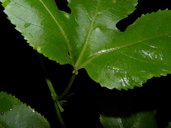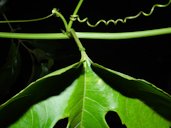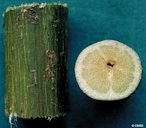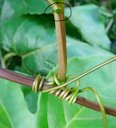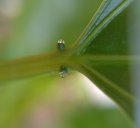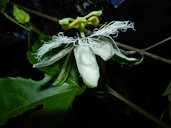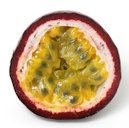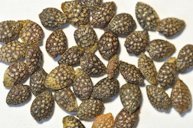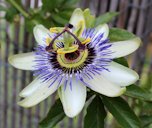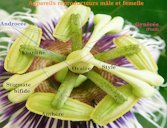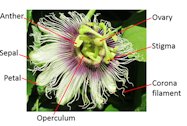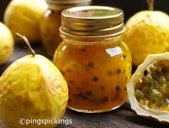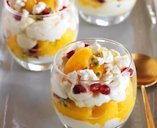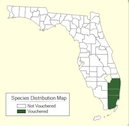| Passionfruit - Passiflora edulis, P. edulis flavicarpa | |||||||||||||||||||||||||||||||||||||||||||||||||||||||||||||||||||||||||
|---|---|---|---|---|---|---|---|---|---|---|---|---|---|---|---|---|---|---|---|---|---|---|---|---|---|---|---|---|---|---|---|---|---|---|---|---|---|---|---|---|---|---|---|---|---|---|---|---|---|---|---|---|---|---|---|---|---|---|---|---|---|---|---|---|---|---|---|---|---|---|---|---|---|
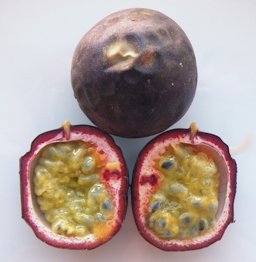 Fig. 1  Passiflora edulis, this variety is called 'Gulupa' in Colombia, to distinguish it from the yellow 'maracuyá' variety 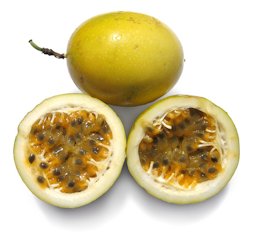 Fig. 2  Two ripe yellow passion fruits, one of them opened to show the edible seeds 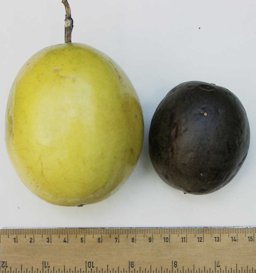 Fig. 3 Yellow and purple passion fruits, side by side, showing differences in size.  Fig. 4 P. edulis Sims 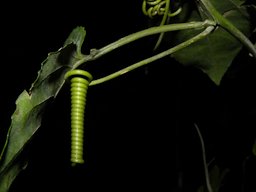 Fig. 5   Fig. 14  P. edulis Sims, one day after anthesis 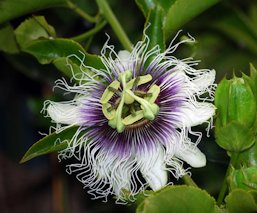 Fig. 15  Passionfruit, P. edulis 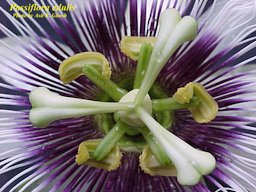 Fig. 16  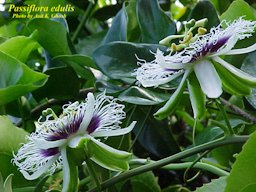 Fig. 17  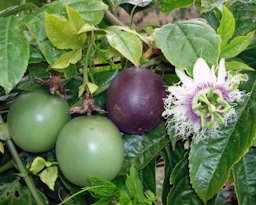 Fig. 22  Fruits, flower and leaves 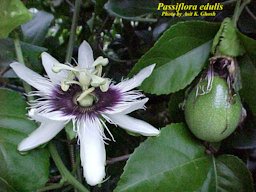 Fig. 23  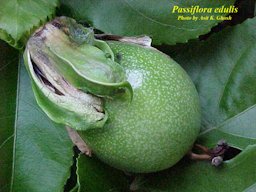 Fig. 24   Fig. 34  Parchitas 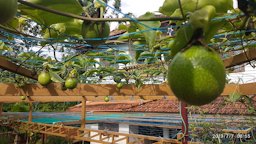 Fig. 35  Passion fruit tender fruits 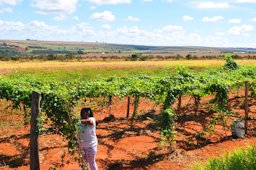 Fig. 36  Produção de maracujá em Brasília supera a média nacional 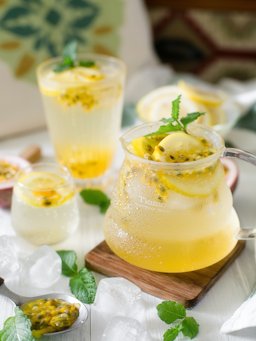 Fig. 37 Maracuyá drink, Colombia 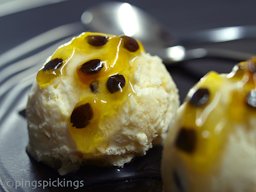 Fig. 38  Passionfruit jam ice cream Fig. 48  Maracua, fruto exótico de Colombia  Fig. 49 P. edulis Île de la Réunion 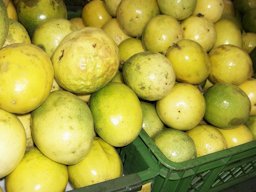 Fig. 50 Yellow maracuya harvested (P. edulis f. flavicarpa) 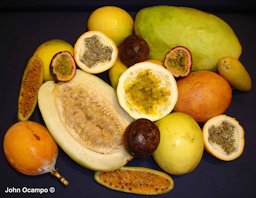 Fig. 51  Frutos de las principales especies cultivadas de Passiflora en Colombia |
Scientific
name Passiflora edulis Sims, P. edulis f. flavicarpa Degener Pronunciation pass-siff-FLOR-ruh ED-yoo-liss 1 Common names P. edulis: English: common passionfruit, purple granadilla; Afrikaans: grenadella; Portuguese (Brazil): maracujá, maracujá-comum, maracujá-de-comer, maracujá-de-ponche, maracujá-doce, maracujá-do-mato, maracujá-mirim, maracujá-peroba, maracujá-preto, maracujá-redondo; Swedish: passionsfrukt; French: fruit de la passion, grenadille, grenadine; Hawai'ian: liliko‘i 8,9 P. edulis flavicarpa: English: yellow passionfruit, yellow granadilla; Portuguese: maracujá, maracujá amarelo, maracujá azêdo; Spanish: maracuyá amarillo, granadilla, maracuyá, parcha criolla, parchita, parchita maracuyá; French: grenadille, grenadille jaune, pomme-liane jaune; Swedish: maracuja; Hawai'ian: liliko'i 14,17 Synonyms P. diaden, P. edulis forma flavicarpa O. Degener, P. edulis var. pomifera, P. edulis var. rubricaulis, P. edulis var. verrucifera 6 Relatives Fragrant granadilla (P. alata); red granadilla (P. coccinea); maypop (P. incarnata); sweet granadilla (P. ligularis); sweet calabash (P. maliformis); banana passionfruit (P. mollissima); water lemon (P. laurifolia); giant granadilla (P. quadrangularis) 3 Family Passifloraceae (passion-flower family) Origin Native to southern America: Brazil and southern south America: Argentina, Paraguay 8 USDA hardiness zones 9b-11 1 Uses Food; screen; health benefits; landscape value for its striking flowers Height May reach 30 ft (9 m) Spread Depends upon supporting structure 1 Plant habit Vine climbing by way of tendrils Growth rate Fast 1 Longevity Generally short-lived (5 to 7 years) 3,21 Pruning requirement Pruning once a year will stimulate new growth and consequently more flower and fruit production 7 Leaves Evergreen; alternate; simple; lobed; ovate; palmate, pinnate; 4-8 in. (10-20.3 cm) 1 Flowers Purple, white; P. edulis: mid-Mar. until May; P. flavicarpa: mid-Apr. to mid-Nov. 23 Fruit A pepo, a type of berry; round to oval; either yellow or dark purple at maturity; with a soft to firm, juicy interior filled with numerous seeds 7 Season Late summer, early fall; in south Florida year-round 12,20 Light requirement Full sun Soil tolerances Grown on many soil types but light to heavy sandy loams, of medium texture are most suitable; good drainage is essential to minimize the incidence of collar rot 7 pH preference 6.0-7.5 21 Drought tolerance Moderate; withstands drought by defoliating 1,7 Aerosol salt tolerance Poor 1 Cold tolerance Purple 25 °F (-3.9 °C) Yellow may be killed at 27 °F (-2.8 °C) 12 Plant spacing 10-15 ft (3-4.5 m) apart; rows 15-20 ft (4.5-6 m) apart 22 Roots Shallow rooted, but spreading Invasive potential * High Invasion Risk for Central, North and South Passion fruit is not listed on either the USDA Florida noxious weeds list or the Florida Exotic Pest Plant Council’s list of Invasive Plant Species 21 Pest resistance Susceptible to root rot; long-term health usually not affected by pests 1,12 Known hazard Parts of the plant, especially the leaves, contain hydrocyanic acid and are therefore poisonous 10 Reading Material The Emerging Passion Fruit Industry in Florida, University of Florida pdf The Passion Fruit in Florida, University of Florida pdf Passiflora edulis Passion Fruit, University of Florida pdf Passionfruit, Fruits of Warm Climates Passionfruit, California Rare Fruit Growers Purple Granadilla, Manual Of Tropical And Subtropical Fruits Origin Passionfruit is a native of southern Brazil where it grows on the edges of rain forests. There are two distinct forms: forma edulis, the purple passionfruit, occurs in cool environments at higher altitudes, whereas forma flavicarpa, the yellow passionfruit, is at home in the tropical lowlands. The two types were distributed throughout the tropics and subtropics via Europe and Australia during the 19th Century. In South-East Asia passionfruit is mainly a home garden crop. 2 Description Passion fruit grow as perennial lianas or woody vines that grow to great length, often covering the tops of mature trees when growing naturally. While mature vines’ total length can exceed 100 ft, they can also grow more than 35 ft in a single year. As new growth emerges from the tips of vines, flower buds emerge along with young leaves and tendrils. The vine’s tendrils help it climb and remain secure as they wrap around objects they come in contact with. Vines that are in shade or partial shade typically drop their leaves. 15 In Passiflora edulis two forms are distinguished: • f. edulis: the purple passionfruit with deep purple fruits 1.5-1 in. (4-5 cm) in diameter, with green tendrils and leaves. This is the most common form, said to have the best flavour. • f. flavicarpa Degener: the yellow passionfruit with canary-yellow fruits 2.5-4.75 in. (6-12 cm) x 1.5-2.75 in. (4-7 cm) and reddish-purple tinged tendrils and leaves; larger, more showy flowers with deeper purple corona and more vigorous growth. 2 Of the 400 known species of Passiflora L. about 50-60 bear edible fruits. In South-East Asia 5 non-edible species are endemic; about 13 edible species have been introduced. In addition to Passiflora edulis, Passiflora quadrangularis L. is important. Frequently, Passiflora plants are cultivated as ornamentals for their showy flowers. 2 Note: Petiole, foliar and bract glands. In all but a few species nectar-yielding glands are present in some form, on the petiole or margin of the bract or underside of the leaf (Fig. 9,12,13). The presence or absence of these glands on the petiole, their shape, number and and position are taxonomically important to separate species and groups of species. 15
Leaves The alternate, evergreen leaves, deeply 3-lobed when mature, are finely toothed, 3-8 in. (7.5-20 cm) long, deep-green and glossy above, paler and dull beneath, and, like the young stems and tendrils, tinged with red or purple, especially in the yellow form. 7 The stems are green, angular when young, becoming round with age, and their centers are hollow (Fig. 10). 10 Two raised glands (Fig. 12,13) present on the upper surface of the petiole just below its junction with the leaf blade. 16
Fig. 6. Leaf heteroblasty in P. edulis from juvenile to adult. The transition of young, monolobed leaves on left to adult, trilobed leaves on right. Fig. 11. Vine stem bark and vine stem transverse section. Fig. 12. Nectaires (French), bract glands circled in black at the top of image. Fig. 13. Nectar droplets on the extrafloral nectaries of a P. edulis seedling (maracuja). Flowers A single, fragrant flower, 2-3 in. (5-7.5 cm) wide, is borne at each node on the new growth. The bloom, clasped by 3 large, green, leaflike bracts, consists of 5 greenish-white sepals, 5 white petals, a fringelike corona of straight, white-tipped rays, rich purple at the base, also 5 stamens with large anthers, the ovary, and triple-branched style forming a prominent central structure. The flower of the yellow is the more showy, with more intense color. 7 Yellow passionfruit flowers are perfect but self-sterile. In controlled pollination studies at the College of Agriculture of Jaboticabal, Sao Paulo, Brazil, it was found that the yellow passionfruit has three types of flowers according to the curvature of the style: TC (totally curved), PC (partially curved), and SC (upright-styled). TC flowers are most prevalent. 7 Flower buds emerge sequentially on the new shoots. They take 40-46 days to anthesis. Sequential flowering during a flush results in fruit maturing over a period of 2-3 months. Thus flowering and fruiting are closely linked to shoot growth. 2 The flowers (P. edulis) open early in the morning (about dawn) and close before noon, and are self-compatible. It only has one flowering cycle. In Florida, blooming occurs from mid-March through April. The flowers (P. edulis f. flavicarpa) open around noon and close about 9 to 10 PM and are self-incompatible. In Florida, blooming has occurred from mid-April to mid-November. 7 Pollination Flowers open shortly after sunrise and remain open until mid-morning the next day, but the stigma is receptive only on the first day. The purple passionfruit is self-compatible, setting well if selfed, but the yellow passionfruit often requires cross-pollination. Bees are the main pollinators; when and where they are not sufficiently active, hand pollination can be practiced. 2 The large carpenter bee (Xylocopa spp.), which has a similar appearance to a bumblebee (Fig. 23), is the most effective insect for pollinating passion fruit. Other bees and nectar-feeding insects can also aid in pollen transfer from one flower to another. Some purple varieties can be self-pollinated, while yellow varieties are not considered capable of self-pollinating, and hybrids vary in their self-compatibility. 21 Wind is ineffective because of the heaviness and stickiness of the pollen. In the home garden, at least two vines of different parentage should be planted and allowed to intertwine for cross-pollination. 7
Why is my passion fruit vine not flowering? Young vines do not produce flowers until they have reached maturity, which can take up to a year. Once a vine has reached maturity and has adequate access to sunlight, nutrients, and water, flowers should be produced on the new growth. Flowers may not always emerge on new growth, especially if the passion fruit has been exces- sively fertilized. Excessive application of nitrogen fertilizer in particular can contribute to excessive vegetative growth rather than flowering. To encourage flowering, reduce fertilizer rates once the vine has reached maturity. 20
Fig. 18. Flower bud nearing blossoming Fig. 21. Carpenter bee on yellow granadilla flower Fruit The nearly round or ovoid fruit, 1.5-3 in. (4-7.5 cm) wide, has a tough rind, smooth, waxy, ranging in hue from dark-purple with faint, fine white specks, to light-yellow or pumpkin-color. It is 1/8 in. (3 mm) thick, adhering to a ¼ in. (6 mm) layer of white pith. Within is a cavity more or less filled with an aromatic mass of double-walled, membranous sacs filled with orange-colored, pulpy juice and as many as 250 small, hard, dark-brown or black, pitted seeds. The flavor is appealing, musky, guava-like, subacid to acid. 7 The yellow passionfruit is oval, weighing from 150 to 250 g (5.3-8.8 oz) each, and containing about 40 percent juice. 18 The purple fruit matures 60-90 days later, the yellow fruit after 60-70 days. Initial fruit set is usually excellent and when the shoot bears some 9 fruits, extension growth slows down and both fruit set and flower bud formation tend to fail, although vigorous young shoots may bear more than 20 fruits. 2 The fruit follows a smooth sigmoid growth curve and attains its maximum diameter in about 3 weeks. The juice content is negligible until shortly before harvest. 2 Depending on the climate there may be 1-3 harvest peaks (purple passionfruit) or a single, often very long harvest season (more common with the yellow passionfruit). 2 Peak production is during midsummer through fall throughout Florida. 21
Fig. 25. Passionfruit (P. edulis) in cross section. The inner flesh is yellow and the exterior of the fruit is purple. Fig. 26. Passion fruit (P. edulis f. flavicarpa). Fig. 27. Passion fruit seeds. Varieties The yellow form has a more vigorous vine and generally larger fruit than the purple, but the pulp of the purple is less acid, richer in aroma and flavor, and has a higher proportion of juice-35-38%. The purple form has black seeds, the yellow, brown seeds. 7 A highly promising hybrid, 'M-21471A' has been developed by Dr. R.J. Knight at the United States Department of Agriculture's Subtropical Horticulture Research Station, Miami. The fruit is maroon, weighs about 3 oz (85 g); is close to the purple parent in quality; is self-compatible and resists soil-borne diseases like its yellow parent. F1 hybrids may be reddish-purple with more conspicuous white dots than on the purple parent, and sometimes there is a tinge of yellow in the background. F2 hybrids show three variations of purple and are difficult to distinguish from the purple parent. 7
Fig. 28,29,30. Grafted black passionfruit (P. edulis 'Nellie Kelly' scion on P. caerulea rootstock) cultivated in Balian, Victoria, Australia Varieties, University of Florida Harvesting Fruit drops to the ground when fully mature. They do not attract flies or ants but should be collected daily to avoid spoilage from soil organisms. At this stage it looks shriveled and unattractive. For fresh fruit markets, especially the export market, fruit is picked after full colour development when the whole fruit is purple or canary yellow, but before shriveling and drying set in. 2,7 Underripe yellow passionfruits can be ripened and stored at 68° F (20° C) with relative humidity of 85 to 90%. Ripening is too rapid at 86 °F (30 °C). Ripe fruits keep for one week at 36 to 45 °F (2.22-7.22 °C). Fruits stored in unperforated, sealed, polyethylene bags at 74 °F (23.1 °C), have remained in good condition for 2 weeks. 7 The fruit has a tough skin which means it can be exported worldwide and remain in good condition. This species is the most commonly cultivated of the passion fruits. 15 Propagation Seeds lose their viability within a few weeks. Germination takes 2-4 weeks; the seedlings grow slowly and require 3-4 months to reach the transplanting height of 8-10 in. (20-25 cm). Within 5-7 weeks after transplanting, each plant will have up to four healthy laterals. From then on the vine grows very rapidly; the first flowers are produced 5-7 months after transplanting when the vine can be 33-49 ft (10-15 m) long. 2 Passion fruit can be propagated by cuttings from productive healthy plants, selected carefully to avoid propagating virus-infected plants. 21 Grafting is often employed to control diseases. Yellow passionfruit is used as resistant rootstock although other Passiflora species, in particular Passiflora caerulea L., show much greater resistance to Phytophthora root rot and Fusarium collar rot. Moreover, Passiflora caerulea is tolerant of rootknot nematode and to exposure to 34.7 °F (1.5 °C); it can be propagated from leaf and stem cuttings and is compatible with Passiflora edulis. Wedge and whip grafts on seedling rootstocks sometimes on rooted cuttings are used. 2 The passionfruit vine, especially the yellow, is fast-growing and will begin to bear in 1 to 3 years. Ripening occurs 70 to 80 days after pollination. 7
Fig. 31. Reproductive organs and filament Fig. 32. Appareils reproducteurs male et femelle (male and female reproductive organs) Fig. 33. Diagram of flower anatomy
Culture The yellow form may be slightly better suited to growth in south Florida than the purple form, as it is more tolerant of heat and humidity. 12 The vines benefit from a heavy application of mulch, which serves to reduce nematode populations and to retain surface moisture. 12 The plant should receive adequate sun and may be planted in full sun. However, light, mid-day shade may be beneficial during periods of extreme summer heat. 12 The maximum profitable life of the yellow passion fruit seems to be 4 to 5 years, but many vines are replaced after 3 years. Vines which have lost most of their vigour or which have excessive dead or diseased wood should be replaced. 13 Pruning After a vine of either the yellow or purple passionfruit attains 2 years of age, pruning once a year will stimulate new growth and consequently more flower and fruit production. The average life of a plantation in Fiji is only 3 years. Judicious pruning of lateral branches after fruiting aids in disease control and can extend plantation life to 5 or 6 years. 7 Training and Pruning the Passiflora Vine, University of Florida Fertilizing Regular applications of fertilizer are needed to sustain the plant's rapid growth rate. High-nitrogen fertilizers may be used to stimulated growth until the plant reaches bearing age. After that, a balanced fertilizer should be applied. A mature plant should receive 3 or 4 applications over the warmer months. These should be applied through July in northern Florida, while they can continue through October in southern Florida. 12,21 For vines growing in high-pH soils (>7), secondary nutrients and micronutrients may be applied to foliage or in chelated form to the soil. Chelated iron applications are important for vines growing in high-pH calcareous soils. 21 Irrigation In home landscapes, passion fruit vines may be irrigated with a small low-aspect sprinkler or with installation of a drip system. It is helpful but not required to have timers programmable with climate information and a rain gauge to manage the system so as to minimize watering frequency and quantity. 21 Commercial plantings use drip lines under plastic mulch or microsprinkler irrigation to minimize water usage and maintain maximum plant productivity. Passion fruit need small but frequent irrigation to ensure that adequate soil moisture is maintained, though not saturated. Soil moisture probes (e.g., tensiometers, capacitance probes) and weather monitoring will improve irrigation scheduling, minimize irrigation rates, and reduce the chance of leaching water and nutrients below the root zone. 21 Regular watering will keep a vine flowering and fruiting almost continuously. Least flowers develop during the winter season due to short day length. Water requirement is high when fruits are approaching maturity. If soil is dry, fruits may shrivel and fall prematurely. 7 Passion Fruit Problems in the Home Landscape, University of Florida pdf Pests and Diseases, University of Florida Food Uses The fruit is of easy preparation. One needs only cut it in half lengthwise and scoop out the seedy pulp with a spoon. For home use, Australians do not trouble to remove the seeds but eat the pulp with cream and sugar or use it in fruit salads or in beverages, seeds and all. 7 The fruit may be eaten fresh, but mostly the pulp is extracted and preserved by heating or cooling. The juice has a unique and intense flavour and high acidity which makes it a natural concentrate. When sweetened and diluted it is very palatable and blends well with other fruit juices. Typical processed products are ice cream, sherbet, nectar, juices, concentrate, squash, jams and jellies. 2 Yellow passion fruit juice is an excellent flavor product and is very popular in the bar trade. It is used either fresh or as a canned juice concentrate. 18 The rind is a very good source of high quality pectin, an excellent jellying agent, which probably accounts for the rapid thickening of the fruit juice in concentration. 10 Passionfruit pulp freezes easily so for a refreshing treat freeze passionfruit pulp in ice trays or popsicle moulds. 11
Fig. 39. Passion fruit P. edulis f. flavicarpa juice and peel, oil and cross-section of passion fruit, showing seeds Fig. 40. A passionfruit (P. edulis) drink at Shoebox Canteen, Singapore Fig. 41. Golden passionfruit jam Fig. 42. Lemon and ricotta stuffed pancakes Fig. 43. Lilikoi cocktail mix Fig. 44. Passion fruit meringue pie Fig. 45. Lemon mousse with passion fruit Fig. 46. Passionfruit and mango Eaton mess Fig. 47. Passion fruit buttercream frosting recipe Prize-Winning Passion Fruit Recipes, 1955, University of Hawai'i Cooperative Extension pdf Food value The fruit shell is about 45% of the fresh weight; 100 g of the edible pulp contains: water 69—80 g, protein 2.3 g, fat 2.0 g (almost all in the seed), carbohydrates 16 g, fiber 3.5 g, Ca 10 mg, Fe 1.0 mg, vitamin A 20 IU, trace thiamine, riboflavin 0.1 mg, nicotinamide 1.5 mg and vitamin C 20 mg. The energy value amounts to 385 kJ/100 g. 2 The yellow passionfruit has somewhat less ascorbic acid than the purple but is richer in total acid (mainly citric) and in carotene content. It is an excellent source of niacin and a good source of riboflavin. Free amino acids in purple passionfruit juice are: arginine, aspartic acid, glycine, leucine, lysine, proline, threonine, tyrosine and valine. Carotenoids in the purple form constitute 1.160%; in the yellow, 0.058%; flavonoids in the purple, 1.060%; in the yellow, 1.000%; alkaloids in the purple, 0.012%; in the yellow, 0.700% (mainly harman), and the juice is slightly sedative. Starch content of purple passionfruit juice is 0.74%; of the yellow, 0.06%. 7 Medicinal Properties ** There is currently a revival of interest in the pharmaceutical industry, especially in Europe, in the use of the glycoside, passiflorine, especially from P. incarnata L., as a sedative or tranquilizer. Italian chemists have extracted passiflorine from the air-dried leaves of P. edulis. 7 Toxicity A cyanogenic glycoside is found in the pulp of passionfruits at all stages of development, but is highest in very young, unripe fruits and lowest in fallen, wrinkled fruits, the level in the latter being so low that it is of no toxicological significance. 7 Other Uses The seeds yield 23% oil which is similar to sunflower and soybean oil and accordingly has edible as well as industrial uses. The seed oil contains 8.90% saturated fatty acids; 84.09% unsaturated fatty acids. The fatty acids consist of: palmitic, 6.78%; stearic, 1.76%; arachidic, 0.34%; oleic, 19.0%; linoleic, 59.9%; linolenic, 5.4%. 7 Other Edibles Passiflora species: Giant Granadilla, P. quadrangularis Water Lemon, P. laurifolia Maypop, P. incarnata General Swiss processors have marketed a passionfruit-based soft drink called "Passaia" for a number of years in Western Europe. Costa Rica produces a wine sold as "Parchita Seco." 7 The name 'passion flower' was given to this plant by Catholic priests, to whom the flower represented the passion of Christ. The ten sepals and petals represented the ten apostles at the Crucifixion; the fringed crown represented the crown of thorns and the five stamens and three styles represented the wounds and nails, respectively. The tendrils were the cords or scourges; the lobed leaves represented the hands of the persecutors. The white symbolized purity and the blue, the heavens. 18
Fig. 52. Passionfruit distribution range, wild species
Fig. 53. Stamps of Indonesia Fig. 54. Fruits of Portugal II - Azores Passion Fruit Further Reading Passiflora edulis Sims, PROSEA Foundation Passion Fruit: Postharvest Quality-Maintenance Guidelines, University of Hawai'i at Mānoa pdf Passionfruit The World Over, California Rare Fruit Growers pdf Goldenberry, Passionfruit, and White Sapote: Potential Fruits for Cool Subtropical Areas, New Crops, Purdue University New Zeland Passionfruit Growers ext link Australia Passion Fruit ext link Passionfruit Botanical Art Older Material Edible Fruited Passiflora Adapted to South Florida Growing Conditions, 1976, Florida State Horticulture Society pdf Passion Fruit Culture in Hawai'i, 1974, University of Hawai'i Cooperative Extension pdf Pollination and Fruit Set in the Yellow Passion Fruit, 1959, Hawai'i Agricultural Experiment Station pdf The Edible Passion Fruit in Hawai'i, 1935, Hawai'i Agricultural Experiment Station pdf List of Growers and Vendors |
||||||||||||||||||||||||||||||||||||||||||||||||||||||||||||||||||||||||
| Bibliography 1 Gilman, Edward F. "Passiflora edulis, Passion Fruit." Environmental Horticulture Dept., UF/IFAS Extension, Original pub. Oct. 1999, Revised Oct. 2023, AskIFAS, edis.ifas.ufl.edu/fp456. Accessed 14 Nov. 2019. 2 Gurnah, A. M. "Passiflora edulis Sims." Edible fruits and nuts, Plant Resources of South-East Asia No 2, Edited by E. W. M. Verheij, and R. E. Coronel, PROSEA Foundation, Bogor, Indonesia, record 1530, 1991, PROSEA, (CC BY-NC-SA 3.0), www.prota4u.org/prosea/view.aspx?id=1530. Accessed 16 Nov. 2019. 3 "Passionfruit." California Rare Fruit Growers, crfg.org.pubs/ff/passionfruit.html. Accessed 14 Nov. 2019. 4 "Passion Fruits Culture in Hawaii." Cooperative Extension Service, University of Hawai'i, Cir. 345, Apr. 1974, Schlolarspace, hdl.handle.net/10125/15278. Accessed 9 Nov. 2019. 5 Lamberts, Mary, and Jonathan H. Crane. "Tropical Fruits." Advances in new crops, Edited by J. Janick and J. E. Simon, 1990, NewCROP™, hort.purdue.edu/newcrop/proceedings1990/V1-337.html. Accessed 16 Nov. 2019. 6 Wunderlin, R. P., B. F. Hansen, et al. "Passiflora edulis." Institute for Systemic Botany, University of South Florida, Tampa, [S. M. Landry and K. N. Campbell (application development), USF Water Institute.], 2019, Atlas of Florida Plants, florida.plantatlas.usf.edu/Plant.aspx?id=63. Accessed 16 Nov. 2019. 7 Fruits of Warm Climates. Julia F. Morton, Miami, 1987. 8 "Taxon: Passiflora edulis Sims." USDA, Agricultural Research Service, National Plant Germplasm System, Germplasm Resources Information Network (GRIN-Taxonomy), National Germplasm Resources Laboratory, Beltsville, Maryland, 2019, U.S. National Plant Germplasm System, npgsweb.ars-grin.gov/gringlobal/taxonomydetail.aspx?id=26962. Accessed 19 Nov. 2019. 9 "Passiflora edulis Sims, Passifloraceae." Pacific Island Ecosystems at Risk (PIER), www.hear.org/pier/species/passiflora_edulis.htm. Accessed 19 Nov. 2019. 10 Fisch, Muriel B. "Passionfruit The World Over." California Rare Fruit Growers, 1975, Passiflora Online, www.passionflow.co.uk/wp-content/uploads/2018/08/passiflora-passion-fruit-crfg-1990.doc. Accessed 20 Nov. 2019. 11 "Freeze it." Australian Passion Fruit, www.aussiepassionfruit.com.au/about-passionfruit/passionfruit-tips-and-tricks/. Accessed 20 Nov. 2019. 12 Boning, Charles R. Florida's Best Fruiting Plants- Native and Exotic Trees, Shrubs, and Vines. Sarasota, Pineapple Press, 2006. 13 Rajkumar, Dyanand. "Growing Passion Fruit In the West Indies." Department of Crop Science, The University of the West Indies, St. Augustine, The Republic of Trinidad and Tobago, May 1987, GOV.VC, agriculture.gov.vc/agriculture/images/stories/PDF_Documents/Growing-Passion-Fruit-in-the-West-Indies.pdf. Accessed 20 Nov. 2019. 14 "Taxon: Passiflora edulis Sims f. flavicarpa O. Deg." USDA, Agricultural Research Service, National Plant Germplasm System, Germplasm Resources Information Network (GRIN-Taxonomy), National Germplasm Resources Laboratory, Beltsville, Maryland, 2019, U.S. National Plant Germplasm System, npgsweb.ars-grin.gov/gringlobal/taxonomydetail.aspx?id=26963. Accessed 19 Nov. 2019. 15 Vanderplank, John. Passion Flowers. 2nd ed. 1991, London, Cassell Publishers, 1996. 16 "Passiflora edulis." Australian Tropical Rainforest Plants, keys.trin.org.au:8080/key-server/data/0e0f0504-0103-430d-8004-060d07080d04/media/Html/taxon/Passiflora_edulis.htm. Accessed 21 Nov. 2019. 17 "Passifloraceae Passiflora edulis f. flavicarpa." New World Fruits Database, Bioidiversity International, nwfdb.bioversityinternational.org/detail/?uid_fruit=21. Accessed 21 Nov. 2019. 18 Hamilton, R. A. "Ten Tropical Fruits of Potential Value for Crop Diversification in Hawaii." Cooperative Extension Service, University of Hawai'i at Mānoa, NO. 1987, CTAHR, www.ctahr.hawaii.edu/oc/freepubs/pdf/RES-085.pdf. Accessed 27 Nov. 2019. 19 The Encyclopedia of Fruit & Nuts. Edited by Jules Janick and Robert E. Paull, Cambridge, CABI, 2008. 20 Rezazadeh, Amir, et al. "Passion Fruit Problems in the Home Landscape." Horticultural Sciences Dept., UF/IFAS Extension, Original pub. Nov. 2020, Reviewed 27 Sept. 2023, AskIFAS, edis.ifas.ufl.edu/hs1397. Accessed 11 Feb. 2021, 14 Feb. 2024. 21 Bailey, Mark, et al. "The Passion Fruit in Florida." Horticultural Sciences Dept., UF/IFAS Extension, Original pub. Jan. 2021, 6 Feb. 2024, AskIFAS, doi.org/10.32473/edis-hs1478-2024, (CC BY-NC-ND 4.0), edis.ifas.ufl.edu/hs1406. Accessed 11 Feb. 2021. 22 Knight, R. J. Jr., and Julian W. Sauls. "The Passion Fruit." Horticultural Sciences Dept., HS60, University of Florida IFAS Extension, Original pub. Apr. 1994, Reviewed Nov. 2005, Nov. 2009, AskIFAS, edis.ifas.ufl.edu. (Archived). Accessed 22 Nov. 2019. 23 Garcia, Ellen, et al. "The Emerging Passion Fruit Industry in Florida." Horticultural Sciences Dept., UF/IFAS Extension, HS1467, Original pub. Sept. 2023, AskIFAS, edis.ifas.ufl.edu/publication/HS1467. Accessed 14 Feb. 2024. Videos v1 Maguire, Ian. "Passionfruit." Tropical Fruit Growers of South Florida, Presenter Julian Lara, (CC0), www.tropicalfruitgrowers.com/videos. Accessed 28 Dec. 2019. v2 "How to Hand Pollinating Passion Fruit Vine - Maracuya." Sulcata Grove, 26 June 2017, (CC0), www.youtube.com/watch?v=2lw6Ik6IyY0. Accessed 16 June 2021. v3 "Propagating Passion Fruit - Passiflora edulis cuttings." Sulcata Grove, 15 Apr. 2017, (CC0), www.youtube.com/watch?v=ompfdtk2pJU. Accessed 16 June 2021. Photographs Fig. 1 Fibonacci. " This variety is called "gulupa" in Colombia, to distinguish it from the yellow "maracuyá" variety." Commons Wikimedia, 12 Sept. 2011, (CC BY-SA 3.0), GFDL, commons.wikimedia.org/wiki/Category:Passiflora_(fruit)#/media/File:Purple_passionfruit.jpg. Accessed 18 Nov. 2019. Fig. 2 Fibonacci. "Two ripe yellow passion fruits, one of them opened to show the edible seeds." Commons Wikimedia, 15 Feb. 2006, (CC BY-SA 3.0), GFDL 1.2, commons.wikimedia.org/wiki/File:Maracuyá.jpg. Accessed 18 Nov. 2019. Fig. 3 Fibonacci. "Purple and yellow passion fruits, side by side, showing differences in size. A ruler is shown for comparison." Commons Wikimedia, 4 Jan. 2006, (CC BY-SA 3), GFDL 1.2, commons.wikimedia.org/wiki/File:Passionfruit_comparison.jpg. Accessed 18 Nov. 2019. Fig. 4,5,7,8,9,10,19,20 Aiguilar, Renaldo. "Passiflora edulis Sims." Las Plantas Vasculares de la Península de Osa de Costa Rica, Encyclopedia of Life, via Flickr, 20 Jan. 2011, EOL, (CC BY-NC-SA 2.0), eol.org/pages/584518/media. Accessed 7 Nov. 2019. Fig. 6 Anderson, Josh. "Leaf heteroblasty in P. edulis from juvenile to adult. The transition of young, monolobed leaves on left to adult, trilobed leaves on right." The Passion Fruit in Florida, Horticultural Sciences Dept., UF/IFAS Extension, Original pub. Jan. 2021, AskIFAS, edis.ifas.ufl.edu/hs1406. Accessed 11 Feb. 2021. Fig. 11 CSRIO. "Passiflora edulis. Vine stem bark and vine stem transverse section." Australian National Herbarium, IBIS database, www.anbg.gov.au/cpbr/cd-keys/RFK7/key/RFK7/Media/Html/entities/Passiflora_edulis.htm. Accessed 21 Nov. 2019. Fig. 12 Filo gèn'. "Nectaires." Commons Wikimedia, 30 May 2018, (CC BY-SA 4.0), GFDL 1.2, commons.wikimedia.org/wiki/Category:Passiflora_edulis#/media/File:Glandes_nectarifères.jpg. Accessed 22 Nov. 2019. Fig. 13 Eiku. "Nectar droplets on the extrafloral nectaries of a Passiflora edulis seedling (maracuja)." Commons Wikimedia, 15 Sept. 2018, (CC BY-SA 4.0), commons.wikimedia.org/wiki/Category:Passiflora_edulis#/media/File:Passiflora_edulis_-_extrafloral_nectaries_04.jpg. Accessed 22 Nov. 2019. Fig. 14 Popovkin, Alex. "Passiflora edulis Sims, One day after anthesis." Flickr, 1 Sept. 2009, (CC BY-NC-SA 2.0), flickr.com/photos/plants_of_russian_in_brazil/3878636817. Accessed 18 Nov. 2019. Fig. 15 "Passion Fruit, Passiflora edulis." Plant Informational Database, Trade Winds Fruit, www.tradewindsfruit.com/content/passionfruit.htm. Accesssed 15 Nov. 2019. Fig. 16,17,23,24 Ghosh, Asit K. "Passiflora edulis." Institurte for Systemic Botany, University of South Florida, Tampa, [S. M. Landry and K. N. Campbell (application development), USF Water Institute.], 2019, Atlas of Florida Plants, florida.plantatlas.usf.edu/Plant.aspx?id=63. Accessed 16 Nov. 2019. Fig. 18 Filo gèn'. "Inflorescence de Passiflora edulis." Commons Wikimedia, 30 May 2018, (CC BY-SA 4.0), GFDL 1.2, commons.wikimedia.org/wiki/Category:Passiflora_edulis#/media/File:Bractées_de_Passiflore.jpg. Accessed 22 Nov. 2019. Fig. 21 Filo gèn'. "Carpenter bee on Yellow grenadilla flower." Commons Wikimedia, 22 July 2017, (CC BY-SA 4.0),commons.wikimedia.org/wiki/Category:Insects_on_Passiflora_edulis_flowers#/media/File:Xylocopa_varipuncta_(female).jpg. Accessed 22 Nov. 2019. Fig. 22 Johnocampo. "Fruits, flower and leaves." Tropical Plants Database, (CC 3.0-2.5-2.0-1.0), tropical.theferns.info/viewtropical.php?id=Passiflora+edulis. Accessed 21 Nov. 2019. Fig. 25 fir0002/ flagstaffotos. "Photographs of a passionfruit in cross section and entire. The inner flesh is yellow and the exterior of the fruit is purple." Commons Wikimedia, 22 Jan. 2009, (CC BY-NC), GFDL 1.2, Image Cropped, commons.wikimedia.org/wiki/File:Passionfruit_and_cross_section.jpg. Accessed 18 Nov. 2019. Fig. 26 Filo gèn'. "Passion fruit on white background." Commons Wikimedia, 26 June 2017, (CC BY-SA 4.0), GFDL 1.2, Image Cropped, commons.wikimedia.org/wiki/Category:Passiflora_edulis#/media/File:Passiflora_edulis_fruit_on_white_backgroung.jpg. Accessed 22 Nov. 2019. Fig. 27 Amada44. "Passion fruit seeds." Commons Wikimedia, 30 Jan. 2011, (CC BY-SA 3.0), commons.wikimedia.org/wiki/Category:Passiflora_(fruit)#/media/File:Passion_fruit_seeds_4440.jpg. Accessed 20 Nov. 2019. Fig. 28,29,30 Chapman, Arthur. "Grafted Black Passionfruit (Passiflora edulis 'Nellie Kelly' scion on Passiflora caerulea rootstock) cultivated in Balian, Victoria, Australia." Encyclopedia of Life, via Flickr, 11919630114, 11919422683, 11919398073, 31 Dec. 2013, EOL, (CC BY-NC-SA), Image Cropped, eol.org/media/6844352. Accessed 19 Nov. 2019. Fig. 31 Filo gèn'. "Reproductive organs and filament." Commons Wikimedia, via French Wikipedia, 14 July 2018, (CC BY-SA 4.0), GFDL 1.2, commons.wikimedia.org/wiki/Category:Passiflora_edulis#/media/File:Fleur_et_organes_de_reproduction.jpg. Accessed 22 Nov. 2019. Fig. 32 Filo gèn'. "Appareils reproducteurs male et femelle, Passiflora edulis." Commons Wikimedia, via French Wikipedia, 13 June 2018, (CC BY-SA 4.0), GFDL 1.2, commons.wikimedia.org/wiki/File:Organe_mâle_et_femelle_de_Passiflora_edulis.jpg. Accessed 22 Nov. 2019. Fig. 33 Bailey, Mark. "Diagram of flower anatomy." The Passion Fruit in Florida, Horticultural Sciences Dept., UF/IFAS Extension, Original pub. Jan. 2021, AskIFAS, edis.ifas.ufl.edu/hs1406. Accessed 11 Feb. 2021. Fig. 34 Consentida. "Parchitas." Encyclopedia of Life, via Flickr, 33113326, 28 Sept. 2013, EOL, (CC BY-SA 3.0), eol.org/media/7169122. Accessed 19 Nov. 2019. Fig. 35 Vijayanrajapuram. "Passion fruit tender fruits." Commons Wikimedia, 7 July 2019, (CC BY-SA 4.0), commons.wikimedia.org/wiki/File:Passion_fruit_tender_fruits.jpg. Accessed 20 Nov. 2019. Fig. 36 Agência Brasília. "Produção de maracujá em Brasília supera a média nacional." Commons Wikimedia, 2 July 2015, (CC BY 2.0), commons.wikimedia.org/wiki/Category:Passiflora_edulis#/media/File:Produção_de_maracujá_em_Brasília_supera_a_média_nacional_(19282746499).jpg. Accessed 22 Nov. 2019. Fig. 37 Lin, ShengGeng. "Maracuyá drink, Colombia." Unsplash, 23 June 2018, unsplash.com/photos/MLxu9kE082c. Accessed 19 Nov. 2019. Fig. 38 pingspickings. "Passionfruit Jam Ice Cream." Foodista, 14 Sept. 2011, (CC BY 3.0), www.foodista.com/recipe/38P636TD/passionfruit-jam-ice-cream. Accessed 20 Nov. 2019. Fig. 39 Sena, P. S. "Passion fruit P. edulis f. flavicarpa juice and peel, oil and cross-section of passion fruit, showing seeds." Commons Wikimedia, 7 Apr.2011, (CC BY-SA 4.0), en.wikipedia.org/wiki/Passiflora_edulis#/media/File:Maracu-compl3.JPG. Accessed 19 Nov. 2019. Fig. 40 Smuconlaw. "A passionfruit (Passiflora edulis) drink at Shoebox Canteen, Singapore." Commons Wikimedia, 4 Sept. 2014, (CC BY-SA 4.0), en.wikipedia.org/wiki/Passiflora_edulis#/media/File:Passionfruit_drink_at_Shoebox_Canteen,_Singapore_-_20140904.jpg. Accessed 19 Nov. 2019. Fig. 41 pingspickings. "Golden Passionfruit Jam." Foodista, 14 Sept. 2011, (CC BY 3.0), www.foodista.com/recipe/2H34CKDC/golden-passionfruit-jam. Accessed 20 Nov. 2019. Fig. 42 "Lemon and ricotta stuffed pancakes." Half Baked Harvest, Passionfruit Australia, www.aussiepassionfruit.com.au. Accessed 20 Nov. 2019. Fig. 43 "Lilikoi Cocktail Mix." Da Vine Foods, www.davinehawaii.com/product/lilikoi-cocktail-mix/. Accessed 20 Nov. 2019. Fig. 44 Linsell, Sam. "Passion Fruit Meringue Pie." Drizzle & Dip blog, 16 Aug. 2012, drizzleanddip.com//2012/08/16/passion-fruit-meringue-pie/. Accessed 20 Nov. 2019. Fig. 45 "Lemon Mousse with Passion Fruit." Vegan Feast Catering, 24 Mar. 2010, (CC BY 2.0), Flickr, www.flickr.com/photos/25128194@N02/4461924292. Accessed 20 Nov. 2019. Fig. 46 "Passionfruit and Mango Eaton Mess." Passionfruit Australia, www.aussiepassionfruit.com.au/project/passionfruit-and-mango-eaton-mess/. Accessed 20 Nov. 2019. Fig. 47 "Passion Fruit Buttercream Frosting Recipe." Da Vine Foods, 1 Feb. 2019, www.davinehawaii.com/recipe/passion-fruit-butter-cream-frosting/. Accessed 20 Nov. 2019. Fig. 48 Arias, F. J. "Maracua, fruto exótico de Colombia." Commons Wikimedia, 16 Sept. 2012, (CC BY 3.0), commons.wikimedia.org/wiki/Category:Passiflora_edulis_(fruit)#/media/File:Maracua.JPG. Accessed 19 Nov. 2019. Fig. 49 Monniaux, David. "Passiflora edulis Île de la Réunion." Commons Wikimedia, 31 Dec. 2004, (CC BY-SA 3.0), commons.wikimedia.org/wiki/File:Passiflora_edulis_dsc07776.jpg. Accessed 18 Nov. 2019. Fig. 50 Fibonacci. "Yellow maracuya harvested (P. edulis f. flavicarpa)." Commons Wikimedia, 17 Apr. 2006, (CC BY-SA 3.0), GFDL 1.2, commons.wikimedia.org/wiki/File:Maracuyá_stand.jpg. Accessed 18 Nov. 2019. Fig. 51 Ocampo, John. "Frutos de las principales especies cultivadas de Passiflora en Colombia." Commons Wikimedia, 18 July 2008, (CC BY-SA 4.0), GFDL 1.2, commons.wikimedia.org/wiki/Category:Passiflora_(fruit)#/media/File:Frutos_de_las_principales_especies_cultivadas_de_Passiflora.jpg. Accessed 20 Nov. 2019. Fig. 52 Wunderlin, R. P., B. F. Hansen, et al. "Passiflora edulis." Institute for Systemic Botany, University of South Florida, Tampa, [S. M. Landry and K. N. Campbell (application development), USF Water Institute.], 2019, Atlas of Florida Plants, florida.plantatlas.usf.edu/Plant.aspx?id=63. Accessed 16 Nov. 2019. Fig. 53 "Stamps of Indonesia." Encyclopedia of Life, via Flickr, 23155920, 2004, EOL, Public Domain, eol.org/media/7169144. Accessed 18 Nov. 2019. Fig. 54 "Portugal, Fruits of Portugal II - Azores Passion Fruit." Universal Postal Union, www.wnsstamps.post/en/stamps/PT012.17. Accessed 22 Nov. 2019. * UF/IFAS Assessment of Non-native Plants in Florida's Natural Areas ** Information provided is not intended to be used as a guide for treatment of medical conditions. Published 27 Nov. 2019 LR. Last update 14 Feb. 2024 LR |
|||||||||||||||||||||||||||||||||||||||||||||||||||||||||||||||||||||||||


